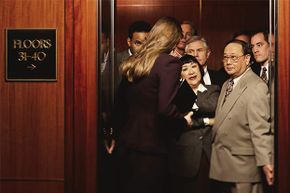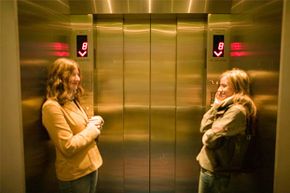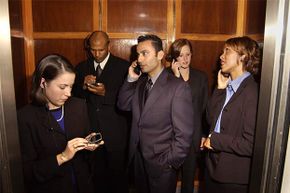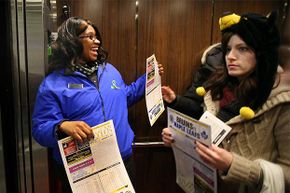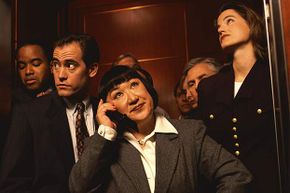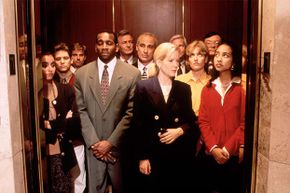Elevators are a goldmine for armchair anthropologists. Where else can you find a random sampling of 10 to 15 human beings with wildly different standards of personal space and personal hygiene forcibly comingled in such an awkward, tightly packed cube? Forget the dinner table — the elevator is where good manners matter the most.
In the 1960s, a scientist named Edward Hall invented the field of proxemics, the study of how humans use personal space as an important form of nonverbal communication. Hall's experiments found that people — OK, American people — divide their personal space into four categories [source: Inglis-Arkell]:
Advertisement
- Public space = at least 12 feet (3.6 meters) away
- Social space = at least 4 feet (1 meter) away
- Personal space = at least 1.5 feet (48 centimeters) away
- Intimate space = way too close for anybody you don't want to make out with
The elevator laughs at your definitions of personal and public space. "In here," it proclaims, "we're all equally uncomfortable!" To make the best out of your next 30-second trip in vertical transportation hell, follow our 10 weird (but indispensable!) rules of elevator etiquette.




